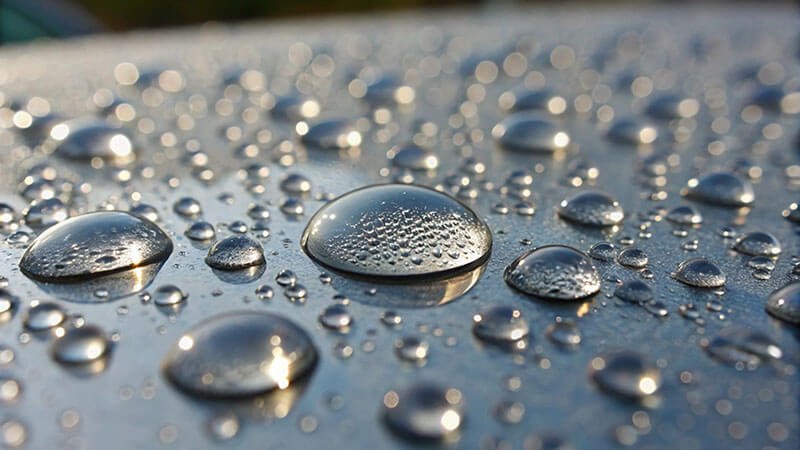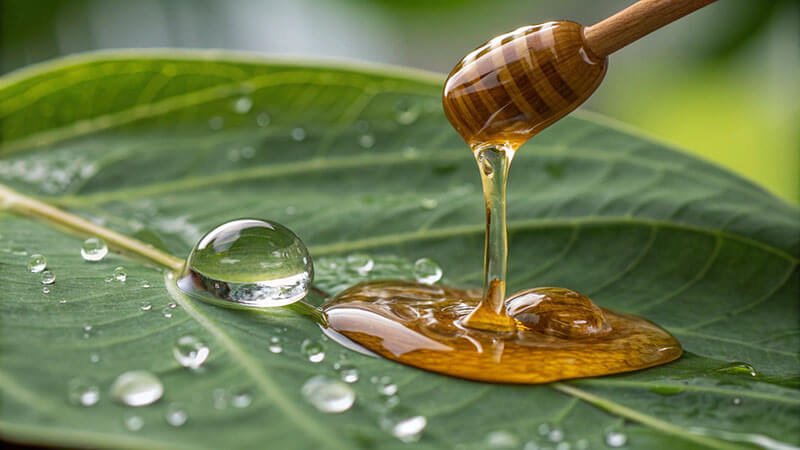You're formulating a product, but it won't spread correctly or hold its shape. You hear "viscosity" and "surface tension" but they sound similar, causing confusion and frustrating formulation problems.
Viscosity is a fluid's resistance to flowing (its thickness). Surface tension is the force holding a fluid's surface together, like a thin skin. They are separate properties but work together to define how a liquid behaves in the real world.
My name is Stefan Wang, and I am the owner of Martests. We manufacture precision viscometers for industries around the world. I've seen firsthand how confusing these two terms can be. A client might try to fix a coating problem by changing the viscosity, when the real issue is surface tension. This wastes time and money.
In this article, I will break down these two critical fluid properties. We will look at what each one is, how they are different, and how they are connected. Understanding this is essential for anyone making coatings, inks, cosmetics, or even food products. Let's start with the one I know best.
What Exactly is Viscosity?
You notice that a liquid is "thick," but that's not a scientific measurement. You can't just tell a supplier to "make it a bit thicker" and expect consistent results.
Viscosity gives you a specific number to define that "thickness." It is a fluid's internal friction, or its resistance to flow. This allows your quality control to be precise, repeatable, and easy to communicate.

Think of viscosity as the "sluggishness" of a fluid. Imagine a deck of playing cards. If you push the top card, it slides. Viscosity is like the friction between those cards. In a low-viscosity fluid like water, the layers slide easily. In a high-viscosity fluid like honey, there's a lot of friction, so the layers resist sliding and the fluid flows slowly. At my factory, we produce rotational viscometers. These instruments, like our rotating spindle or cone and plate models, work by measuring the force (torque) needed to rotate a spindle in a fluid. This gives a precise viscosity value in units like centipoise (cP). This number is what my customers, from large distributors to specialized labs, use to guarantee their product is the same, every single time. A customer in the adhesives industry uses our viscometers to ensure their glue is thick enough to stay in place but thin enough to be applied by their machinery.
| Fluid Example | Viscosity Behavior | Common Application |
|---|---|---|
| Water | Low viscosity; flows easily. | Solvent, beverage base. |
| Motor Oil | Medium viscosity; designed to flow but also cling. | Lubrication for engines. |
| Honey | High viscosity; flows very slowly. | Food topping, natural thickener. |
| Paint | Non-Newtonian; viscosity changes with force. | Thins when brushed, thickens at rest. |
And What is Surface Tension?
You have seen water bead up on a freshly waxed car. You have seen a small insect walk on the surface of a pond. But you are not sure how this strange effect relates to your industrial coating.
Ignoring surface tension can cause your paint or ink to pull away from edges or form craters, ruining the final product. Understanding it helps you control how a liquid interacts with a surface, ensuring perfect coverage.

Surface tension is a property that happens only at the surface of a liquid. Imagine the molecules inside a liquid. They are being pulled equally in every direction by their neighbors. But the molecules right at the surface don't have any neighbors above them. So, they get pulled inwards and sideways by the molecules below and next to them. This net inward pull creates a tight, elastic-like film on the surface. This is why water forms round droplets—the sphere is the shape with the smallest possible surface area. For industrial processes, this is incredibly important. For a paint or ink to cover a surface, its surface tension must be lower than the surface energy of the material it is coating. If the liquid's surface tension is too high, it will prefer to stick to itself and will bead up instead of spreading out. Additives called surfactants are used to lower surface tension for this exact reason.
| Effect of Surface Tension | Description | Real-World Example |
|---|---|---|
| High Surface Tension | Liquid pulls itself into beads or droplets; resists spreading. | Water beading on a non-stick pan. |
| Low Surface Tension | Liquid spreads out easily to "wet" a surface. | Rubbing alcohol spreading across a tabletop. |
How Do Viscosity and Surface Tension Differ and Interact?
You now know what viscosity and surface tension are. But you're still looking at a failed batch of product, wondering which property is the one causing the problem.
You might be trying to change the viscosity when the real issue is surface tension. Knowing their distinct roles and how they interact allows you to troubleshoot formulation problems quickly and effectively, saving time and materials.
Here is the simplest way to remember the difference. Viscosity is a bulk property. It describes the entire body of the liquid and its resistance to movement. Surface tension is a surface property. It only describes what is happening at the air-liquid interface. A fluid can have any combination of these two independent properties. I often tell my clients a simple phrase to help them remember: "Surface tension gets your paint to spread on the wall, but viscosity keeps it from dripping to the floor." You need to manage both. First, you need low enough surface tension for your liquid to wet the substrate. Then, you need the right viscosity profile to ensure it forms a film of the correct thickness without sagging or running. My customer Jacky, a distributor in Italy, understands this well. His customers in the printing industry need inks with low surface tension to wet the paper, but a specific viscosity to create sharp, clear dots without smudging.
| Property Combination | Example & Behavior |
|---|---|
| High Viscosity, High Surface Tension | Honey. It flows slowly (high viscosity) and forms a distinct, rounded bead (high surface tension). |
| High Viscosity, Low Surface Tension | Some silicone oils. They are thick (high viscosity) but can spread easily over a surface (low surface tension). |
| Low Viscosity, High Surface Tension | Water. It flows easily (low viscosity) but beads up on a waxed car (high surface tension). |
| Low Viscosity, Low Surface Tension | Acetone. It flows easily (low viscosity) and spreads out into a thin film very quickly (low surface tension). |
Conclusion
Viscosity is a liquid's thickness. Surface tension is its surface skin. They are different but work together to control how a liquid behaves. Mastering both is key to product quality.


